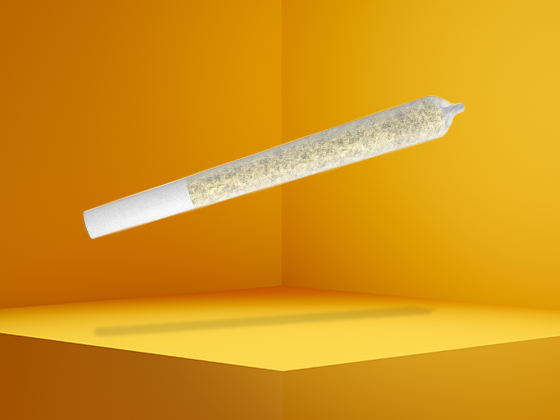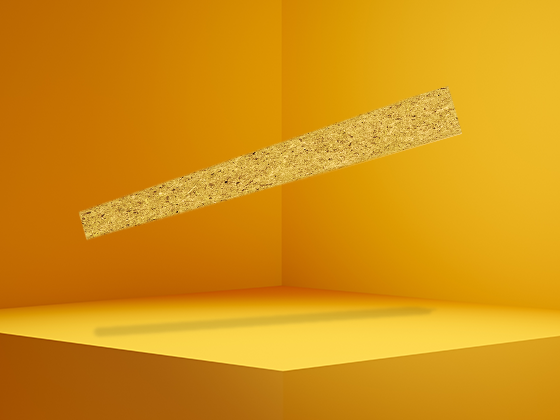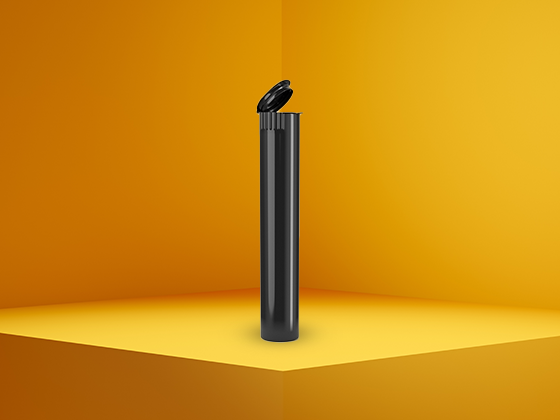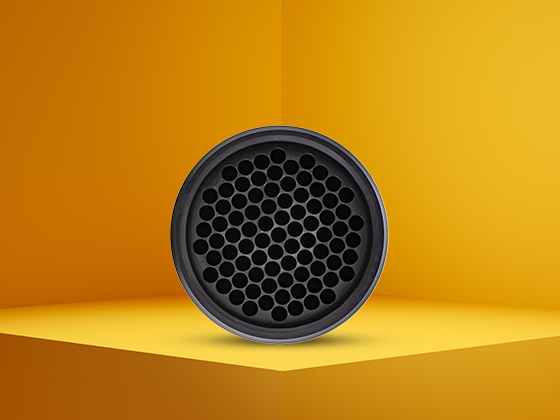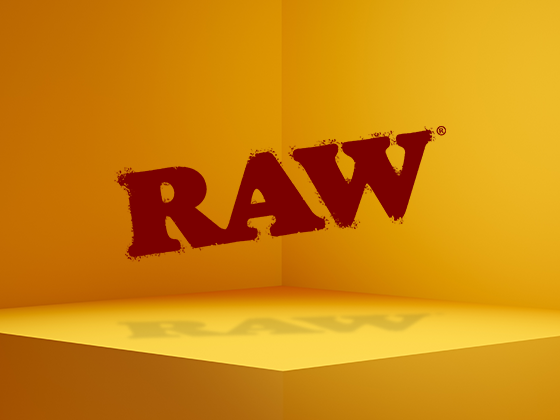Resources

business tips
Alternative Materials and Composition of Joint Papers
Table of Contents
Traditional Joint Paper Composition
Safe Alternative Materials for Rolling Joints
Household Items That Can Substitute for Joint Papers
Materials to Avoid When Seeking Alternatives
Best Practices for Using Alternative Rolling Materials
Future Innovations in Rolling Materials
Understanding what joint paper is made of and what you can use as joint paper alternatives is essential knowledge for cannabis enthusiasts. Whether you've run out of rolling papers or are simply curious about different options, knowing the composition and alternatives can enhance your experience while ensuring safety.Traditional Joint Paper CompositionStandard rolling papers are typically made from plant-based materials processed into thin sheets. The most common compositions include:
Wood Pulp: Traditional papers often contain wood pulp processed to create thin, burnable sheets. These papers may contain chemicals from the bleaching process.
Rice: Rice papers burn slowly and produce minimal ash. They're made from processed rice and often contain fewer additives than wood pulp varieties.
Hemp: Made from cannabis plant fibers, hemp papers are popular for their sustainable sourcing and complementary burning properties. As detailed in this guide to buying the best joint papers, hemp papers often burn more evenly than alternatives.
Flax: Flax papers offer a natural alternative with minimal processing, appealing to those seeking cleaner options.
Most quality papers also contain natural gum arabic as an adhesive strip, allowing the paper to be sealed when rolled. Some specialty papers may include flavoring agents or colorings, though purists often prefer unbleached, additive-free options.Safe Alternative Materials for Rolling JointsWhen wondering what you can use as joint paper in a pinch, several viable alternatives exist:Corn HusksDried corn husks have been used traditionally in many cultures. They're natural, provide a mild flavor, and burn relatively slowly. To prepare:
Clean and dry the husk thoroughly
Trim to appropriate size
Rehydrate briefly before rolling to increase flexibility
Rose PetalsRose petals offer a fragrant, flavorful alternative. According to this resource on creative rolling alternatives, rose petals can be lightly toasted to create a pliable, smokable wrapper.Highlight: When selecting alternative materials for joint rolling, prioritize natural, untreated plant materials that haven't been exposed to pesticides or chemicals.Household Items That Can Substitute for Joint PapersCommon household items can serve as emergency substitutes when considering what you can use for joint paper:Bible PagesThe thin pages of a Bible (particularly the blank ones) have historically been used as rolling paper substitutes. While effective due to their thinness and burning properties, this practice may be considered disrespectful by many.Receipt PaperThough not ideal due to potential chemical coatings, thermal receipt paper can work in emergencies. However, most experts recommend avoiding this option when possible due to potential toxins.Cigarette PapersEmpty cigarettes can be carefully split and emptied, with the paper repurposed for rolling. This provides a ready-made paper with filter, though cigarette papers often contain additives.For those concerned about safety when using alternative materials, proper safety containers with child-resistant features are essential for storing both your herbs and your rolling supplies, especially in households where children might be present.Materials to Avoid When Seeking AlternativesNot all thin papers or materials are suitable substitutes when investigating what joint paper is made of or what alternatives exist:
Magazine/Glossy Paper: Contains inks and chemicals that release toxins when burned
Colored Paper: Dyes can release harmful compounds
Treated Papers: Papers with chemicals, coatings, or fragrances should be avoided
Aluminum Foil: Releases aluminum particles when heated, potentially harmful to lungs
Notebook Paper: Too thick and contains chemicals from processing
Understanding what materials to avoid is just as important as knowing what can be used safely. As explained in this comprehensive guide on rolling and smoking joints, material selection significantly impacts both experience and safety.Best Practices for Using Alternative Rolling MaterialsWhen using alternative materials for joint rolling, follow these guidelines:Preparation TechniquesMost natural alternatives benefit from proper preparation:
Ensure materials are thoroughly dried before use
Cut to appropriate size and shape
Consider a light toasting to improve pliability
Test burn a small piece to check for unusual odors or smoke
Rolling ConsiderationsAlternative materials may require adjusted rolling techniques:
Use a filter/crutch to provide structure
Roll more loosely than with traditional papers
Consider using honey or fruit juice as natural adhesives
Practice with the material before adding valuable herbs
For detailed techniques on rolling with alternative materials, this ultimate guide to rolling joints provides valuable insights for various styles and materials.Future Innovations in Rolling MaterialsThe cannabis accessory market continues to evolve, with new rolling materials emerging:
Biodegradable Options: Environmentally conscious papers that decompose quickly
Hemp-Cellulose Hybrids: Combining the benefits of multiple plant fibers
Organic Certification: Papers certified free from pesticides and harmful chemicals
Functional Additives: Papers infused with CBD or terpenes for enhanced effects
As consumer awareness grows regarding what joint paper is made of, manufacturers are responding with cleaner, more sustainable options. For those who prefer not to roll at all, pre-rolled cones and automated rolling devices provide convenient alternatives to traditional rolling papers.Whether you're seeking emergency substitutes for what you can use as joint paper or simply exploring options beyond traditional papers, understanding material composition and safety considerations ensures the best possible experience. When in doubt, natural, unprocessed plant materials typically offer the safest alternatives to commercial rolling papers.

flower
Step-by-Step Guide to Rolling a Cross Joint
Table of Contents
What Is a Cross Joint and Why It's Popular
Supplies Needed for Rolling a Cross Joint
Step-by-Step Guide to Rolling a Cross Joint
Common Mistakes and Troubleshooting
Advanced Techniques and Variations
Mastering the Craft: Taking Your Cross Joint Skills Further
Rolling a cross joint is an advanced cannabis rolling technique that creates an impressive smoking experience. Made famous by popular culture, this distinctive joint resembles a cross or plus sign and burns from multiple points simultaneously. While it may look complicated, learning how to roll a cross joint is achievable with practice, patience, and the right guidance.What Is a Cross Joint and Why It's PopularA cross joint consists of two joints intersecting to form a cross shape, with one joint passing through a hole in the larger, primary joint. This design allows for multiple lighting points and creates a unique smoking experience that's both visually impressive and functionally interesting.The cross joint gained significant popularity after appearing in films and being showcased by cannabis enthusiasts. Beyond its novelty appeal, many enjoy the cross joint for special occasions or as a way to demonstrate rolling prowess. As our guide to rolling different joint styles notes, specialty joints like the cross joint have become symbols of creativity in cannabis culture.Supplies Needed for Rolling a Cross JointBefore attempting to roll a cross joint, gather these essential supplies:
Cannabis flower (1-2 grams, depending on desired size)
3 rolling papers (2 standard size, 1 king size)
Grinder
Small poking tool (like a toothpick or paperclip)
Scissors
Filter tips (optional but recommended)
Storage container for later use
Quality supplies make a significant difference in your results. For storing your finished creation, durable mylar storage bags can help preserve freshness if you're making cross joints ahead of time for an event or special occasion.Step-by-Step Guide to Rolling a Cross JointPart 1: Rolling the Main Joint1. Grind your cannabis to a medium consistency.2. Take your king-size rolling paper and create a filter tip if desired.3. Fill the paper with ground cannabis, distributing it evenly.4. Roll the paper between your fingers to shape the cannabis into a cylinder.5. Tuck the unglued side of the paper over the cannabis and roll upward.6. Lick the glue strip and seal the joint, twisting both ends to secure the cannabis inside.7. This main joint should be thicker than usual, as you'll need to create a hole through it.Highlight: The main joint in a cross joint needs to be rolled slightly thicker than normal to maintain structural integrity after you create the hole for the cross piece.Part 2: Creating the Cross Piece1. Using a standard-size paper, roll a thinner joint following the same basic technique.2. This joint should be significantly thinner than your main joint.3. Seal it well and twist both ends.4. Using your poking tool, carefully create a hole through the center of your main joint. Work slowly to avoid tearing the paper.5. The hole should be just large enough for your cross joint to fit through.Part 3: Assembling the Cross Joint1. Carefully insert the thinner joint through the hole in the main joint.2. Position it so that equal lengths extend from both sides of the main joint.3. Take your third rolling paper and cut it into strips.4. Wrap these strips around the intersection point, using the gum edge to seal.5. These reinforcement strips are crucial for proper airflow and structural integrity.6. Lick and seal these strips carefully around all connection points.7. Allow a moment for the gum to dry and strengthen the connection.Common Mistakes and TroubleshootingWhen learning how to make a cross joint, several common issues might arise:
Hole too large: If the hole in your main joint is too big, the cross piece won't seal properly, causing air leaks.
Weak intersection: Insufficient reinforcement at the crossing point can cause structural failure when smoking.
Uneven burning: If one arm burns faster than others, it may indicate uneven packing or airflow issues.
As our beginners' guide to rolling emphasizes, patience is key. Don't be discouraged if your first few attempts aren't perfect. Each attempt improves your technique.Advanced Techniques and VariationsOnce you've mastered how to roll the cross joint in its basic form, consider these variations:
Double Cross: Create a more complex structure with two crossing joints through the main one.
Colored Papers: Use different colored papers for visual effect.
Flavored Papers: Incorporate flavored papers for added taste dimensions.
Size Variations: Experiment with different sized papers for mini or jumbo cross joints.
Advanced rollers might also experiment with incorporating concentrates or creating a mix of different strains in each arm of the cross. For more creative ideas, check out our guide on creative rolling alternatives.Mastering the Craft: Taking Your Cross Joint Skills FurtherRolling a cross joint is more than just a smoking method, it's a craft that demonstrates patience and dexterity. As you continue to practice how to roll cross joints, you'll develop your own techniques and preferences.Consider documenting your progress and sharing techniques with fellow enthusiasts. Many find that teaching others helps refine their own skills. Additionally, understanding the proper techniques for smoking and preserving joints will help ensure your creation delivers the experience you intended.Remember that the goal isn't just to create something that looks impressive but also functions well. A properly rolled cross joint should burn evenly and provide a smooth smoking experience from start to finish.With practice, patience, and the right supplies, you'll be rolling cross joints that are both functional and visually stunning, perfect for special occasions or whenever you want to elevate your cannabis experience.
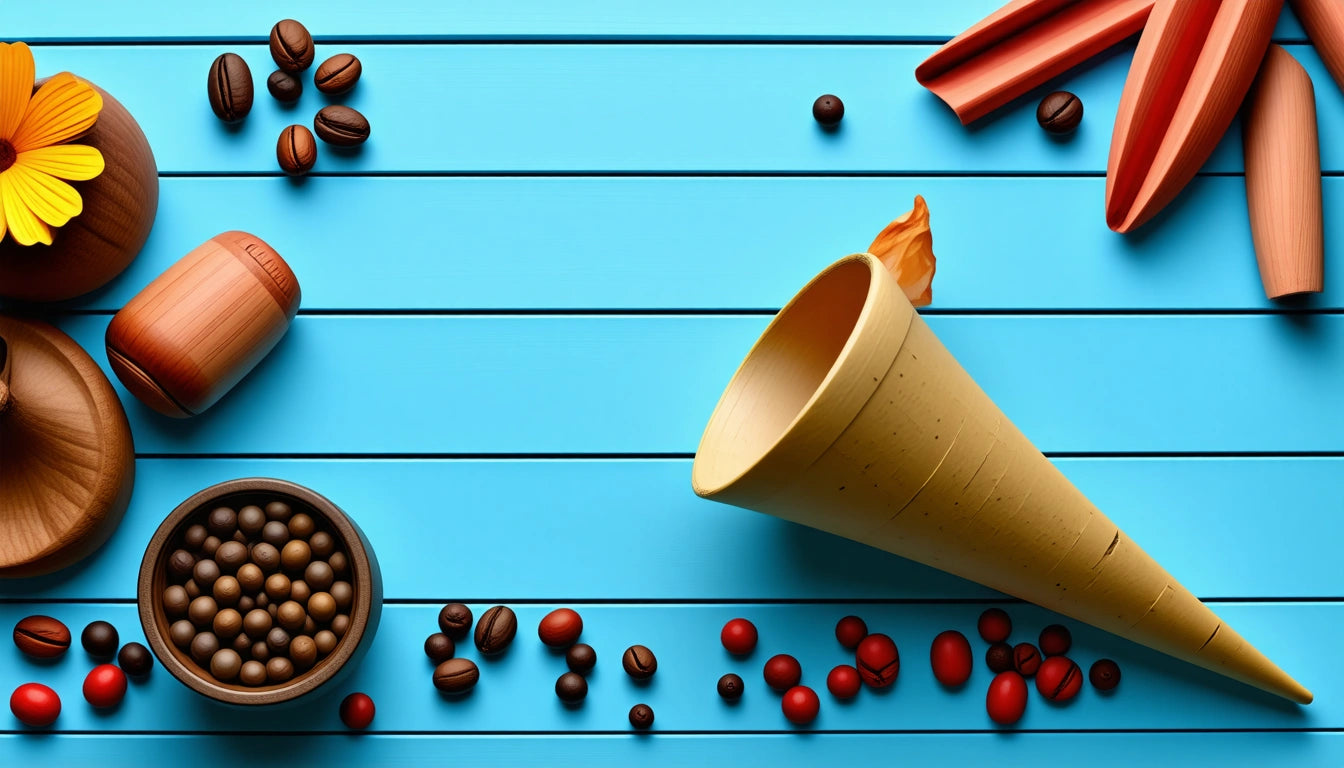
flower
Mastering the Art of Packing a Cone for Smoking
Table of Contents
Benefits of Pre-Rolled Cones
Essential Supplies for Packing a Cone
Step-by-Step Guide to Packing a Cone
Common Mistakes When Packing Cones
Advanced Techniques for Perfect Cones
Packing Tips for Different Cone Types
Perfecting Your Cone Experience
Pre-rolled cones have revolutionized the smoking experience, offering convenience and consistency for both beginners and experienced enthusiasts. Learning how to pack a cone properly ensures an even burn, smooth draw, and optimal enjoyment. This comprehensive guide breaks down the process into simple steps, helping you achieve the perfect pack every time.Benefits of Pre-Rolled ConesPre-rolled cones eliminate the need for hand-rolling skills, providing a ready-made paper cone with a filter tip already attached. Popular brands like RAW offer high-quality options that have become industry standards. The benefits of using pre-rolled cones include:
Consistency in shape and size
Time-saving convenience
Professional appearance
Reduced waste compared to failed rolling attempts
Even burning when packed correctly
According to this guide on using RAW cones, pre-rolled options have gained popularity due to their ease of use and reliable performance.Essential Supplies for Packing a ConeBefore learning how to pack a RAW cone or any other brand, gather these supplies:
Pre-rolled cones in your preferred size
Ground flower material
Grinder (manual or electric)
Packing tool or pencil
Clean, flat surface
Optional: cone filling machine for bulk preparation
The quality of your grind significantly impacts how well your cone packs and burns. Using quality grinder machines ensures your material is broken down to the ideal consistency, neither too fine (which restricts airflow) nor too coarse (which creates an uneven burn).Step-by-Step Guide to Packing a Cone1. Prepare Your MaterialStart by grinding your flower to a medium consistency. A proper grind allows for efficient packing and optimal airflow. Too fine a grind can lead to clogging, while chunks that are too large create air pockets and uneven burning.2. Set Up Your ConeHold the cone vertically with the open end facing up. Many cones come with a packing tool, but you can also use a pencil eraser, chopstick, or specialized packing stick. This hand-filling guide recommends supporting the cone in a cup or holder while filling.3. Fill the ConeGradually add your ground material into the cone. Start with small amounts and work your way up. The best way to pack a cone is to add material in layers, gently tapping the cone on a flat surface between additions to settle the contents naturally.4. Pack the MaterialUse your packing tool to gently press down the material. Understanding how tight to pack a cone is crucial. The bottom (near the filter) should be packed more firmly than the top, creating a density gradient that promotes even burning.5. Finish the ConeOnce filled to your desired level, twist the excess paper at the top to seal the cone. Don't twist too tightly, as this can restrict airflow. A properly packed cone should feel firm but still have some give when gently squeezed.Highlight: The key to properly packing a cone is creating a density gradient, with material packed more firmly at the bottom near the filter and slightly looser toward the top. This promotes even burning and prevents canoeing.Common Mistakes When Packing ConesWhen learning how to pack a cone blunt or traditional cone, avoid these common errors:
Overpacking: Packing too tightly restricts airflow and makes drawing difficult
Underpacking: Too loose a pack causes uneven burning and wasted material
Uneven distribution: Creates hot spots and side-burning (canoeing)
Improper grinding: Material that's too fine or too coarse affects burn quality
Ignoring the filter: Not properly securing the filter can lead to it falling out
This comprehensive guide explains how proper technique prevents these issues and ensures a quality experience.Advanced Techniques for Perfect ConesLayering Different MaterialsOnce you've mastered how to pack a cone with weed, consider experimenting with layering different strains or incorporating other herbal materials for customized effects and flavors.Using Humidity PacksProperly hydrated material packs more evenly and burns more consistently. Consider using humidity control packs with your flower before grinding for optimal moisture content.Batch PreparationFor efficiency, many enthusiasts prepare multiple cones in a single session. Cone filling machines can help maintain consistency when preparing larger quantities.Packing Tips for Different Cone TypesDifferent cone types require slightly different approaches:Standard Paper ConesBrands like RAW, Elements, and OCB offer traditional paper cones. These require a balanced pack that's neither too tight nor too loose. This guide on RAW cone tips provides specific advice for this popular brand.Hemp ConesHemp cones can handle a slightly tighter pack due to their material strength. This hemp cone guide explains their unique properties and packing considerations.Blunt ConesWhen learning how to pack a cone blunt, remember these typically larger cones may require more material and burn slower than paper alternatives. They benefit from a slightly looser pack due to their thickness.Perfecting Your Cone ExperienceMastering how to pack cones is a skill that improves with practice. Pay attention to how your cones burn and draw, making small adjustments to your technique with each experience. The perfect cone should burn evenly, draw smoothly, and maintain its integrity throughout the entire session.Remember that environmental factors like humidity and air temperature can affect your cone's performance. In dry conditions, a slightly looser pack may work better, while humid environments might require a firmer pack to maintain proper burning.With these techniques and tips, you'll be well on your way to consistently creating perfectly packed cones that deliver an exceptional smoking experience every time.

business tips
Understanding the Duration and Effects of a Joint High
Table of Contents
Typical Duration of a Joint High
Factors Affecting How Long a Joint High Lasts
Onset and Peak Effects
Consumption Methods and Duration Comparison
Detection Window in the Body
Managing Your High Responsibly
Cannabis consumers often wonder how long does a joint high last when planning their consumption. Understanding the timeline of effects helps users make informed decisions about when and where to consume, especially for those with responsibilities or activities scheduled later. This guide explores the factors affecting the duration of a cannabis high from smoking a joint, typical timelines, and tips for managing your experience.Typical Duration of a Joint HighWhen asking how long does a joint high last, most users can expect effects to persist for approximately 1-3 hours after smoking. However, residual effects may continue for up to 4-6 hours in some cases. The primary psychoactive effects typically peak within 30 minutes to an hour after consumption and gradually taper off.For new or occasional users, the effects may feel more intense and potentially last longer due to lower tolerance. Regular consumers might experience shorter duration highs as their bodies become accustomed to THC.Factors Affecting How Long a Joint High Lasts1. Cannabis Potency and QuantityThe THC content in your joint significantly impacts how long your high will last. Modern cannabis strains often contain 15-25% THC or higher, compared to 3-5% in decades past. Understanding how many grams are in a joint helps gauge potency, as a typical joint contains 0.3-0.5 grams of cannabis.2. Individual Factors
Metabolism: Faster metabolisms process cannabinoids more quickly
Body weight and composition: THC is fat-soluble and may affect different body types differently
Tolerance level: Regular users develop tolerance, potentially shortening the high
Genetics: Some people naturally process cannabinoids differently
3. Consumption MethodHow you prepare your cannabis matters. Using quality grinder machines for consistent particle size can affect burn rate and potency delivery. Properly ground cannabis burns more evenly, potentially extending how long a joint lasts after lighting while providing a more consistent experience.Highlight: The average joint high lasts 1-3 hours for most users, with residual effects potentially continuing for 4-6 hours depending on potency, individual factors, and consumption method.Onset and Peak EffectsUnderstanding how long does being high last from a joint requires knowing the typical timeline:
Initial onset: 2-10 minutes after inhalation
Peak effects: 30 minutes to 1 hour after smoking
Plateau phase: 1-2 hours where effects remain relatively stable
Comedown: 2-3 hours after consumption, effects begin to diminish
Residual effects: Subtle effects may persist for 4-6 hours
For those wondering how many hits of a joint gets u high, most users report feeling effects after 2-4 inhalations, though this varies greatly based on the factors mentioned above.Consumption Methods and Duration ComparisonHow long does a joint high last compared to other consumption methods? Here's a comparative breakdown:
Consumption Method
Onset Time
Peak Effects
Total Duration
Joint/Smoking
2-10 minutes
30-60 minutes
1-3 hours
Edibles
30-90 minutes
2-3 hours
4-8 hours
Vaporizing
2-5 minutes
30 minutes
1-3 hours
Dabbing (Concentrates)
Almost immediate
10-30 minutes
1-3 hours
The proper preparation of your joint affects both the experience and duration. Mastering the art of even and slow burning joints can help extend your session and provide a more consistent high.Detection Window in the BodyWhile the psychoactive effects of a joint typically last a few hours, THC remains detectable in the body much longer. For those concerned about how long will one joint stay in urine reddit discussions often cite these general guidelines:
Urine tests: 3-30 days (depending on frequency of use)
Blood tests: 1-2 days
Saliva tests: 24-72 hours
Hair tests: Up to 90 days
Single-use consumers may clear THC from their system faster than regular users, for whom cannabinoids accumulate in fat cells over time. This is why occasional users might test clean after 3-5 days, while heavy users might test positive for weeks after cessation.Managing Your High ResponsiblyUnderstanding how long does a high last from a joint helps consumers plan accordingly. Here are some practical tips:1. Timing ConsiderationsPlan your consumption with ample buffer time before responsibilities. Knowing how long to wait after smoking before driving is essential for safety, with most experts recommending at least 4-6 hours.2. Dosage ControlStart with less and go slow. Understanding how much weed is in a joint helps manage dosage. Consider taking just 1-2 puffs and waiting 15 minutes to gauge effects before continuing.3. Environment MattersA comfortable, familiar setting can help manage the duration and quality of your high. Stressful environments may intensify or negatively affect the experience.By understanding the typical duration of effects and factors that influence how long does a joint high last, consumers can make informed decisions about their cannabis use. Remember that individual experiences vary, and responsible consumption includes planning around the expected duration of effects.

flower
Effective Solutions for Repairing a Canoe Joint
Table of Contents
Understanding Why Joints Canoe
Quick Fixes for an Already Canoeing Joint
Proper Rolling Techniques to Prevent Canoeing
Lighting Techniques That Ensure Even Burns
Material Considerations for Smooth-Burning Joints
Preventative Measures for Long-Term Success
A perfectly rolled joint should burn evenly from all sides, creating an enjoyable smoking experience. Unfortunately, many cannabis enthusiasts encounter the frustrating problem of "canoeing" or "running" where one side burns faster than the other, creating an uneven burn that resembles a canoe. Learning how to fix canoeing joint issues can save your material and improve your smoking experience.Understanding Why Joints CanoeBefore diving into solutions, it's important to understand why joints canoe in the first place. According to experts on joint canoeing prevention, several factors contribute to uneven burning:
Uneven distribution of material inside the paper
Improper rolling technique creating air pockets
Inconsistent grinding of cannabis flower
External factors like wind or improper lighting
Paper quality and thickness variations
Moisture content in the cannabis
Understanding these root causes helps develop effective strategies for both prevention and repair of canoeing joints.Quick Fixes for an Already Canoeing JointThe Lick and Stick MethodWhen you notice your joint beginning to canoe, one of the quickest fixes is the "lick and stick" method:
Identify the fast-burning side (the higher side of the "canoe")
Lightly wet your finger
Apply moisture to the paper on the fast-burning side
The moisture slows down the burn rate on that side, allowing the slower side to catch up
The Rotation TechniqueAnother effective approach is strategic rotation:Position the faster-burning side downward when taking a hit. Heat rises, so this orientation encourages the slower-burning side to catch up. Consistently rotate the joint between puffs to promote even burning across all sides.Highlight: Proper humidity control is crucial for preventing joint canoeing. Using humidity control packs in your storage containers helps maintain optimal moisture levels in your flower, resulting in more consistent burns when rolled.Proper Rolling Techniques to Prevent CanoeingPrevention is always better than correction. Proper joint rolling techniques significantly reduce the likelihood of canoeing:Even DistributionEnsure your ground cannabis is evenly distributed throughout the paper before rolling. Any lumps or uneven areas can create air pockets that lead to canoeing.Proper CompressionRoll with consistent pressure throughout the joint. Too tight and it won't draw properly; too loose and it will burn unevenly. The goal is a firm but slightly springy consistency.Quality Paper SelectionThinner papers generally burn more evenly than thick ones. Consider using high-quality, slow-burning papers specifically designed for cannabis.Lighting Techniques That Ensure Even BurnsHow you light your joint significantly impacts how evenly it burns. Proper lighting techniques include:
Rotating the joint while applying the flame to ensure all sides ignite evenly
Using the "roast" method where you hold the flame near (but not touching) the tip and rotate until it's evenly lit
Taking shorter, gentler puffs during the initial lighting phase
Avoiding windy conditions that can cause one side to catch more quickly
These lighting practices help establish an even cherry from the start, preventing the conditions that lead to canoeing.Material Considerations for Smooth-Burning JointsThe quality and condition of your materials play a crucial role in how evenly your joints burn.Proper GrindingA consistent grind creates an even burning surface. Too coarse and you'll get air pockets; too fine and it might burn too quickly. Invest in a quality grinder that produces consistent results.Moisture ContentCannabis that's too dry burns quickly and unevenly, while overly moist flower can be difficult to keep lit. Proper storage with humidity control is essential for maintaining optimal moisture levels.Filter TipsUsing a filter tip (crutch) provides structural support and helps maintain airflow, contributing to more even burning throughout the joint.Preventative Measures for Long-Term SuccessBeyond immediate fixes, implementing these preventative measures will help ensure consistently even-burning joints:Proper storage is essential for maintaining optimal moisture content in your cannabis. Too dry, and it burns too quickly; too moist, and it burns unevenly. Using specialized humidity control solutions like proper preservation techniques keeps your flower in ideal condition.For consistent results, consider these additional preventative measures:
Use a two-stage grinding process for perfectly consistent material
Incorporate mixing techniques that blend different parts of the flower for consistent moisture
Practice rolling techniques regularly to develop muscle memory
Consider using pre-rolled cones if hand-rolling consistently results in canoeing
Store rolled joints properly in airtight containers to maintain even moisture distribution
By understanding the causes of canoeing and implementing both preventative measures and quick fixes, you can enjoy smoothly burning joints with minimal frustration. Remember that practice makes perfect, and even experienced rollers occasionally encounter a canoeing joint. The key is knowing how to address the issue quickly and effectively when it occurs.

flower
Where to Purchase RAW Cones: Your Guide to Finding Retailers and Stores
Table of Contents
Brick and Mortar Retailers: Finding RAW Cones Locally
Online Retailers: Where to Buy RAW Cones on the Internet
Convenience Stores and Gas Stations: Quick Stops for RAW Cones
Wholesale Options for Bulk Purchases
Identifying Authentic RAW Products
Key Purchasing Considerations for RAW Cones
RAW cones have become a staple for cannabis enthusiasts looking for a convenient, ready-to-fill option that delivers a pure smoking experience. Made from unbleached, natural paper, these pre-rolled cones save time and offer consistency that hand-rolling can't always guarantee. If you're wondering where to buy RAW cones, this comprehensive guide covers both physical locations and online sources to help you find authentic products at reasonable prices.Brick and Mortar Retailers: Finding RAW Cones LocallyWhen looking for immediate access to RAW cones, several brick-and-mortar options exist:Smoke Shops and Tobacco StoresSpecialty smoke shops are the most reliable physical locations to purchase RAW cones. These establishments typically offer:
The widest variety of sizes (from 1 ¼ to king size)
Multi-packs and bulk options
Knowledgeable staff who can answer questions
Complementary products like grinders and storage containers
Most metropolitan areas have several smoke shops, making them accessible options for most consumers. Exploring your options for purchasing cones can help you find the right local retailer.Cannabis DispensariesIn states with legal cannabis, dispensaries often carry RAW cones alongside their flower products. While selection may be more limited than at dedicated smoke shops, dispensaries ensure you're getting authentic products. They may also offer staff recommendations on which cone size works best for different consumption needs.Highlight: When purchasing from physical stores, always check that RAW cones are sealed in their original packaging to ensure authenticity and freshness.Online Retailers: Where to Buy RAW Cones on the InternetOnline shopping provides convenience and often better pricing for RAW cones:Direct from ManufacturerPurchasing directly from RAW's official website guarantees authenticity and often provides access to limited edition products and bundles not available elsewhere.E-commerce PlatformsMajor online retailers like Amazon and specialized smoking accessory websites offer competitive pricing and convenient delivery options. However, be cautious about potential counterfeit products on marketplace platforms. Look for sellers with high ratings and verified reviews.For those interested in understanding the various RAW cone options, online retailers often provide detailed product descriptions and specifications.Convenience Stores and Gas Stations: Quick Stops for RAW ConesMany people wonder, "Does Wawa sell RAW cones?" or whether they can pick up cones at their local gas station. While convenience stores like Wawa, 7-Eleven, and Circle K increasingly stock smoking accessories, their selection is typically limited to:
Standard sizes (usually 1 ¼ or king size)
Smaller pack quantities
Higher per-unit pricing
Chain policies vary by location and local regulations, so availability isn't guaranteed. Urban and college-area convenience stores are more likely to carry RAW products than rural locations.Wholesale Options for Bulk PurchasesFor those looking to purchase in larger quantities, whether for personal use or business purposes, wholesale options provide significant cost savings:Wholesale DistributorsCompanies specializing in smoking accessories offer bulk pricing on RAW cones. We offer custom pre-rolled cones for businesses looking to create branded products with the quality consumers expect from professionally made cones.Subscription ServicesSeveral companies now offer subscription boxes for smoking accessories, including RAW cones, delivered on a regular schedule. These services often provide discounted pricing compared to one-time purchases.Understanding RAW cone pricing structures can help you determine whether bulk purchasing makes sense for your needs.Identifying Authentic RAW ProductsCounterfeit RAW products have become increasingly common. To ensure you're purchasing authentic items:
Check for the RAW watermark visible when held to light
Verify the criss-cross pattern is properly aligned
Confirm packaging includes proper holographic elements
Use the authentication app provided by RAW
Purchase from authorized retailers
Counterfeit products may contain harmful chemicals or additives not present in authentic RAW papers, which are made from unbleached, natural materials.Key Purchasing Considerations for RAW ConesWhen deciding where to buy RAW cones, consider these factors:Age RequirementsBe aware that age requirements for purchasing cones apply both in physical stores and online. Most retailers require customers to be 21+, with ID verification required at checkout.Size and Quantity NeedsRAW cones come in various sizes, from small 1 ¼ to party-sized options like the RAW Challenge cone, which has a significant capacity measured in grams. Consider your typical usage to determine which size and quantity make the most sense.Complementary AccessoriesMany retailers offer bundles that include cones along with RAW tips, fillers, or storage solutions. These packages often provide better value than purchasing items separately.For those new to using pre-rolled cones, learning how to properly pack and smoke cones will ensure the best experience regardless of where you purchase them.The Future of RAW Cone Accessibility and OptionsAs cannabis legalization expands across the United States and globally, access to RAW cones and similar products continues to improve. We're seeing trends toward:
More mainstream retailers carrying smoking accessories
Expanded options for sustainable and organic materials
Innovative cone designs for specific consumption preferences
Increased availability of premium rolling accessories
Whether you prefer the convenience of online shopping, the immediate gratification of local stores, or the cost savings of wholesale purchases, understanding where to buy RAW cones ensures you'll always have access to these popular smoking accessories.
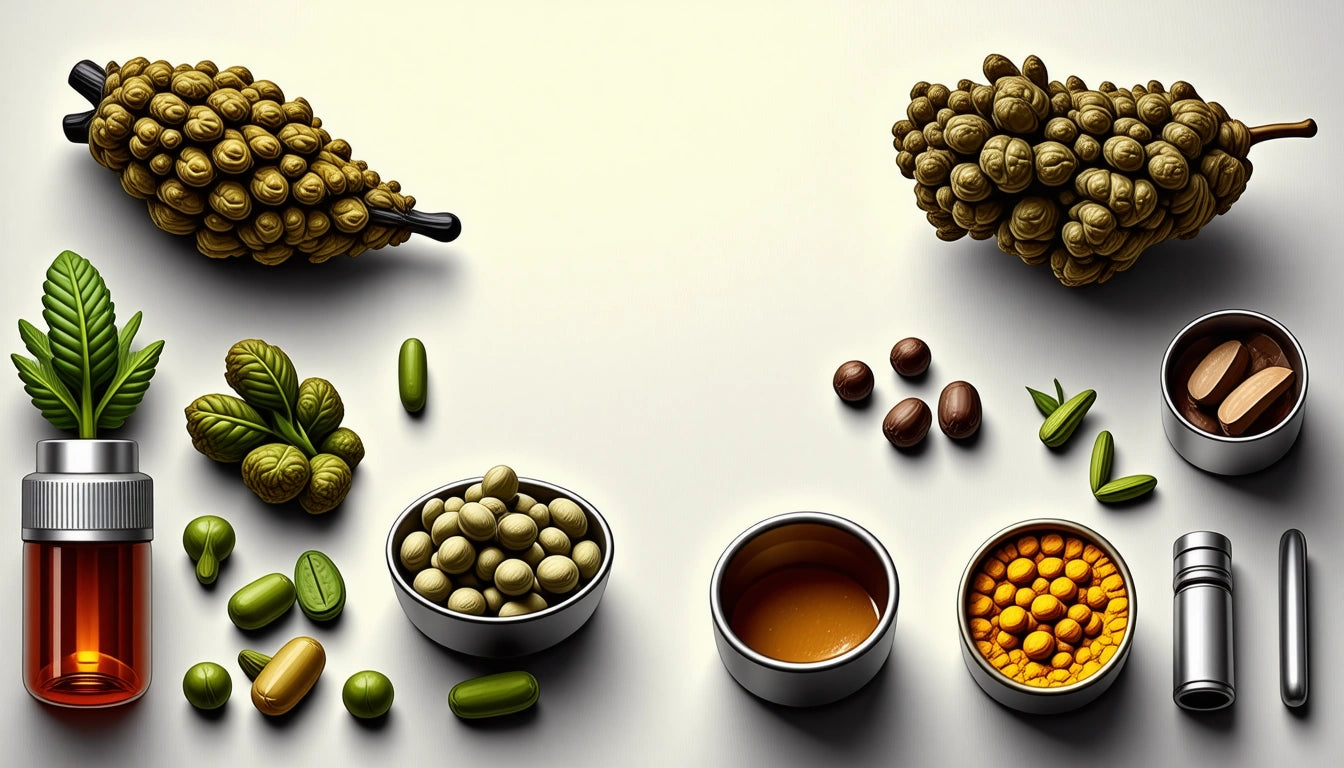
compliance
How Much Weed Is in a Joint: Grams, Cost, and Potency Explained
Table of Contents
Standard Joint Measurements: How Many Grams in a Joint
Joint Pricing Factors: What Determines Cost
Potency Considerations: THC Content in Joints
Consumption Guidelines: Maximizing Your Experience
Market Variations: Regional Differences in Joint Size and Cost
Safety and Packaging: Protecting Consumers and Children
Future of Joint Consumption: Trends and Innovations
Understanding how much weed is in a joint is essential for both new and experienced cannabis consumers. Whether you're curious about cost efficiency, dosing, or simply want to know what you're consuming, this guide breaks down the standard measurements, pricing factors, and potency considerations for cannabis joints.Standard Joint Measurements: How Many Grams in a JointThe average joint contains approximately 0.3 to 0.5 grams of cannabis, though this can vary based on rolling technique and preference. According to research on cannabis measurements, most pre-rolled joints sold in dispensaries typically contain about 0.5 to 1 gram of cannabis flower.For context:
A standard joint (0.3-0.5g): Perfect for solo consumption or sharing between two people
A pinner joint (0.25g or less): A slimmer joint with less cannabis, ideal for microdosing
A king-size joint (0.75-1g): Larger format for longer sessions or sharing among multiple people
With these measurements in mind, you can roll approximately 7-14 joints from an eighth ounce (3.5g) of cannabis, depending on your preferred joint size.Joint Pricing Factors: What Determines CostThe cost of a joint varies widely based on several factors. According to pricing insights, a single pre-rolled joint typically costs between $5-15 in legal markets, with premium options reaching $20 or more.Key pricing determinants include:
Flower quality: Premium strains command higher prices
THC content: Higher potency products generally cost more
Market location: Prices vary by state and local regulations
Packaging: Special packaging or multi-packs may offer better value
Brand premium: Established brands often charge more for their products
When considering how much is a joint of weed, remember that rolling your own from bulk flower is typically more cost-effective than purchasing pre-rolls, though pre-rolls offer convenience and consistency.Highlight: A typical cannabis joint contains 0.3-0.5 grams of flower and costs $5-15 in legal markets, though prices vary based on quality, potency, and location.Potency Considerations: THC Content in JointsUnderstanding potency is crucial when evaluating how much pot in a joint will affect you. Modern cannabis strains typically contain between 15-25% THC, though some premium varieties can reach 30% or higher.For a standard 0.5g joint with 20% THC content, you're consuming approximately 100mg of THC. However, due to combustion and other factors, only about 60% of this THC is typically absorbed when smoking.When exploring what are the strongest marijuana joints you can buy, look for:
Infused pre-rolls: Enhanced with concentrates like kief or oil
High-THC strains: Specially bred for maximum potency
Full-spectrum products: Containing the full range of cannabinoids for enhanced effects
Consumption Guidelines: Maximizing Your ExperienceHow you consume a joint significantly impacts your experience. Proper rolling and smoking techniques can help you get the most from your cannabis:Optimal Consumption Methods
Take small, measured puffs rather than deep inhalations
Allow 10-15 minutes between puffs to gauge effects
Consider using a filter tip for smoother hits
Store partially smoked joints properly to preserve freshness
For those concerned about dosage equivalence, comparing joints to other consumption methods can help you understand relative potency. For instance, the effects of a 0.5g joint might roughly compare to 10-15mg of THC in edible form, though the onset and duration differ significantly.Market Variations: Regional Differences in Joint Size and CostHow much weed in one joint and how much it costs can vary dramatically by location. In mature markets like Colorado or Oregon, prices tend to be lower due to market saturation and competition. Newer markets or those with stricter regulations often have higher prices.Regional variations also extend to typical joint sizes and packaging standards. Some markets favor smaller, precise pre-rolls (0.3-0.5g), while others commonly offer full-gram options. Understanding these regional differences can help consumers set appropriate expectations when traveling between markets.Safety and Packaging: Protecting Consumers and ChildrenSafety considerations are paramount in cannabis packaging, especially in legal markets. Proper packaging not only preserves product freshness but also prevents accidental consumption. According to safety guidelines for consumer products, cannabis packaging must be designed to be difficult for children under five to open while remaining accessible for adults.Most legal markets require cannabis products, including pre-rolled joints, to be sold in child-resistant packaging. These requirements help prevent accidental ingestion while ensuring the product remains fresh and potent until consumption.Future of Joint Consumption: Trends and InnovationsThe cannabis industry continues to evolve, with innovations affecting how much weed is in a joint and how it's consumed. Emerging trends include:
Precision dosing: Micro-dosed joints with exact cannabinoid content
Enhanced delivery systems: Filters designed to cool smoke and reduce harmful compounds
Specialty blends: Custom ratios of THC, CBD, and terpenes for targeted effects
Sustainable packaging: Eco-friendly options reducing the environmental impact
As consumer sophistication grows, expect to see more variety in joint sizes, compositions, and specialized products catering to specific needs and preferences. The future of joint consumption likely includes more personalization options while maintaining the social ritual that has made joints a cannabis consumption staple.Whether you're new to cannabis or a seasoned consumer, understanding how many grams of weed in a joint, typical costs, and potency considerations will help you make informed decisions about your consumption.
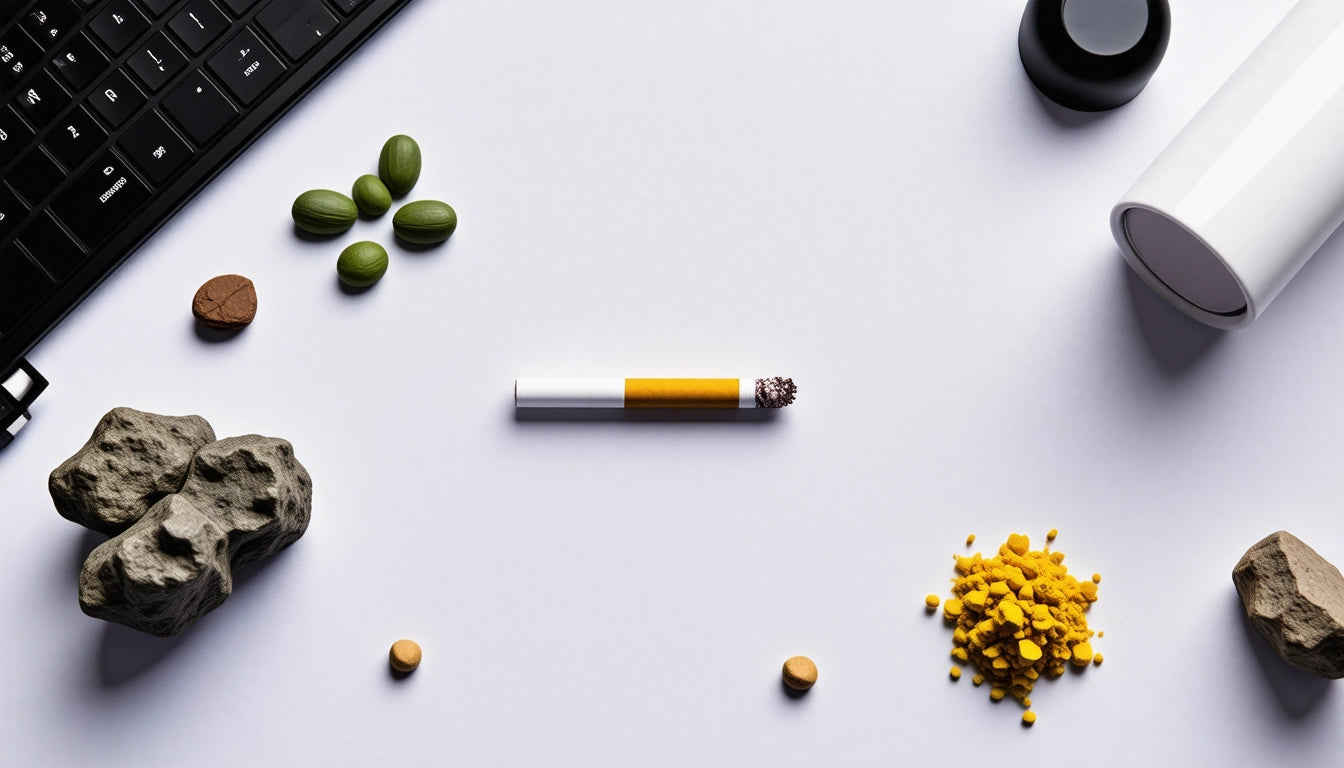
flower
Understanding Joint Smoking: Methods, Risks, and Variations
Table of Contents
What is Joint Smoking: The Basics
Health Considerations: Does Smoking Joints Cause Cancer?
Joint Variations: Beyond the Basic Roll
Can You Smoke Kief in a Joint?
Can You Smoke Moon Rocks in a Joint?
Joint Components: Filters and Partial Consumption
Can You Smoke a Joint Without a Filter?
Can You Smoke Half a Joint?
Best Practices for Healthier Joint Consumption
Joint smoking remains one of the most popular and traditional methods of cannabis consumption worldwide. Whether you're new to cannabis or a seasoned consumer, understanding the nuances of joint smoking can enhance your experience while helping you make informed decisions about consumption methods.What is Joint Smoking: The BasicsA joint is simply ground cannabis flower rolled in thin paper for smoking. Unlike blunts (which use tobacco leaf wraps) or spliffs (which mix cannabis with tobacco), traditional joints contain only cannabis and rolling paper. The popularity of joints stems from their simplicity, portability, and minimal equipment requirements.According to comprehensive joint smoking guides, proper joint rolling involves several key steps: grinding the flower to a consistent texture, creating an even distribution within the paper, and applying the right rolling technique for an even burn.Health Considerations: Does Smoking Joints Cause Cancer?The question of whether smoking joints causes cancer requires nuanced understanding. Any combustion process, including smoking cannabis, produces potentially harmful compounds. When cannabis burns, it releases carcinogens similar to those in tobacco smoke, though typically in different quantities and compositions.Research suggests that while cannabis smoke contains some carcinogens, the relationship between joint smoking and cancer is less established than with tobacco. However, regular cannabis combustion and inhalation may contribute to respiratory issues including chronic bronchitis and lung irritation.For those concerned about health impacts, comparing smoking methods can help identify alternatives with potentially reduced harm profiles, such as vaporization or edible consumption.Highlight: While joint smoking produces some carcinogens through combustion, the cancer risk appears lower than with tobacco smoking. Nevertheless, smoke-free consumption methods offer potential harm reduction benefits.Joint Variations: Beyond the Basic RollCan You Smoke Kief in a Joint?Kief, the collection of crystal-like trichomes that fall off cannabis flower, can indeed be smoked in a joint. This potent concentrate adds significant potency to the smoking experience. When adding kief to joints, consumers typically:
Sprinkle it throughout the ground flower before rolling
Create a line of kief along the length of the prepared flower
Roll a "twax" joint by applying kief to the outside of a completed joint using a binding agent
For precise kief measurement, many consumers rely on accurate digital scales designed specifically for cannabis products, ensuring they achieve their desired potency level without overwhelming the experience.Can You Smoke Moon Rocks in a Joint?Moon rocks (cannabis buds coated in oil and rolled in kief) can technically be included in joints, but this presents several challenges. The sticky, dense nature of moon rocks makes them difficult to grind and prone to creating airflow problems within a joint.For those determined to incorporate moon rocks into a joint, best practices include:
Breaking moon rocks into very small pieces rather than grinding
Mixing sparingly with regular ground flower
Ensuring proper drying time if freshly made
Using slightly thicker rolling papers for structural integrity
According to joint smoking technique guides, many experienced consumers prefer dedicated methods for moon rocks rather than joint incorporation.Joint Components: Filters and Partial ConsumptionCan You Smoke a Joint Without a Filter?Joints can absolutely be smoked without filters (also called crutches or tips). Filterless joints were the norm before the widespread adoption of paper filters. However, smoking without a filter presents several considerations:
Increased likelihood of plant material entering the mouth
Potential for a harsher smoking experience
More difficult handling as the joint burns down
Potential waste of cannabis in the final portion
For those interested in filterless options, alternative rolling techniques can help minimize these drawbacks while maintaining the traditional experience.Can You Smoke Half a Joint?Consuming half a joint and saving the remainder for later is a common practice, especially for solo consumers or those with lower tolerance. When smoking half a joint:
Extinguish gently by tapping or twisting against a non-flammable surface
Avoid using water, which can ruin the remaining portion
Store in an airtight container to preserve freshness and minimize odor
Expect a slightly harsher taste when relighting
For optimal preservation between sessions, proper storage techniques can maintain quality and minimize odor leakage.Best Practices for Healthier Joint ConsumptionWhile joint smoking carries inherent risks from combustion, several practices can potentially reduce harm:
Use unbleached, additive-free rolling papers
Consider hemp papers, which may contain fewer chemicals
Avoid deep inhalation or breath-holding, which doesn't increase effects but may increase tar deposition
Use proper filters to reduce particulate inhalation
Consider occasional breaks to allow respiratory system recovery
Stay hydrated before, during, and after smoking
When compared to other methods, joint smoking offers specific benefits and drawbacks that consumers should weigh according to their personal health considerations and preferences.Understanding joint smoking in all its variations allows consumers to make informed choices that balance tradition, convenience, potency, and health considerations in their cannabis journey.

flower
Creative Alternatives and Techniques for Rolling a Joint Without Traditional Papers
Table of Contents
Understanding Joint Rolling Basics
Safe Paper Alternatives for Rolling Joints
Fruit and Vegetable Options for Natural Smoking
Household Items That Can Substitute for Rolling Papers
Unsafe Alternatives to Avoid
Rolling Techniques When Using Alternative Materials
Preserving Your Cannabis When Alternative Rolling Methods Fail
When traditional rolling papers aren't available, cannabis enthusiasts often seek alternative methods to enjoy their flower. While learning how to roll a joint with ZigZag papers is a fundamental skill, knowing how to improvise can be equally valuable. This guide explores safe alternatives, practical techniques, and important considerations for rolling joints without conventional papers.Understanding Joint Rolling BasicsBefore exploring alternatives, it's helpful to understand what makes traditional rolling papers effective. Quality papers like ZigZag are thin, burn evenly, and contain minimal chemicals. They're designed specifically for smoking, with properties that affect burn rate, flavor, and overall experience.According to our comprehensive joint rolling guide, the ideal rolling material should be:
Thin enough to burn properly
Strong enough to hold together
Minimally flavored to preserve cannabis terpenes
Free of harmful chemicals or treatments
Safe Paper Alternatives for Rolling JointsCorn HusksDried corn husks make excellent natural rolling papers. They're fibrous, relatively thin, and impart minimal flavor. To use:
Select and clean a corn husk thoroughly
Allow it to dry completely
Trim to appropriate size
Moisten slightly before rolling
Bible PagesWhile controversial, Bible pages have historically been used as emergency rolling papers due to their thin, uncoated nature. If using this method, always choose blank pages without ink and remove any glue.Gum WrappersThe paper backing of gum wrappers can work in a pinch. Remove the foil layer completely, then use the remaining paper. These tend to burn quickly, so roll with care.Highlight: When considering if you can use parchment paper to roll a joint, the answer is yes, but with caution. Food-grade parchment paper without silicone coating can work as an emergency alternative, though it burns faster than traditional papers.Fruit and Vegetable Options for Natural SmokingNatural materials often provide the safest alternatives to rolling papers:Apple PipesRather than rolling, create a pipe from an apple:
Remove the stem
Create a bowl by carving a small depression at the top
Make a tunnel from the top to the side using a pen or similar tool
Create an airflow hole on the opposite side
Corn Husk WrapsAs mentioned in our article on alternative joint materials, corn husks have been used for centuries as natural smoking wraps. They provide a clean, subtle flavor and are biodegradable.Household Items That Can Substitute for Rolling PapersCommon household items can sometimes serve as temporary solutions:Empty CigarettesCarefully empty the tobacco from a cigarette and refill with ground cannabis. This method preserves the filter and paper structure.Rose PetalsFor a fragrant alternative:
Wash and dry rose petals (ensure they're pesticide-free)
Lightly toast them to remove moisture
Lick the edges to stick multiple petals together
Allow to dry slightly before rolling
This technique creates a flavorful, aromatic smoking experience with minimal harshness.Unsafe Alternatives to AvoidSome commonly suggested alternatives pose serious health risks:Receipt PaperIf you're wondering can you use receipt paper to roll a joint, the answer is a firm no. Receipt paper contains BPA and other chemicals that release toxic fumes when burned.Magazine or Newspaper PagesThese contain inks and chemicals that produce harmful smoke when burned. The colored inks are particularly dangerous.Aluminum FoilWhile not a paper alternative, some attempt to create foil pipes or wraps. This can release aluminum particles when heated, potentially causing respiratory issues.Rolling Techniques When Using Alternative MaterialsWhen learning how to roll a joint without papers, your technique may need adjustment:The Envelope FoldFor stiffer materials like corn husks:
Create a V-shaped trough with your alternative material
Place ground cannabis in the center
Fold one side over, then the other
Seal with honey or natural tree sap if needed
The Cylinder MethodFor more paper-like alternatives:
Create a cylinder shape around a pencil
Secure one end by twisting
Remove the pencil
Fill with ground cannabis
Twist the other end or use a makeshift filter
For more detailed instructions, our beginner's guide to rolling the perfect joint offers techniques that can be adapted for alternative materials.Preserving Your Cannabis When Alternative Rolling Methods FailIf you can't find a suitable rolling alternative, focus on preserving your cannabis until proper papers are available. Humidity control packs designed for cannabis storage can maintain your flower's freshness and potency until you can enjoy it properly. These specialized packs maintain the ideal moisture level, preventing your cannabis from drying out or developing mold.When traditional papers aren't available, creativity and caution should guide your approach. While emergency alternatives can work temporarily, investing in quality rolling papers and keeping them on hand remains the best practice for enjoying cannabis safely and effectively.

